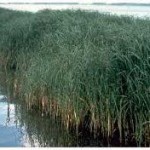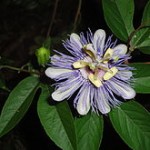Don’t Erode, Expand

 The Chesapeake Bay and its tidal tributaries include 4,360 miles of shoreline, more than a quarter of it eroding.
The Chesapeake Bay and its tidal tributaries include 4,360 miles of shoreline, more than a quarter of it eroding.
Clearly waterfront property values can erode as well.
Erosion is site specific, so the fixes must be as well. In extreme cases, elaborate structural fixes are called for that require permits and engineering. But, in all cases, Conservation Landscaping can help.
Gently sloping and terracing a shoreline yard can be an effective defense against erosion. Beaches prevent average high water levels from reaching upper areas. Marshes slow wave action and trap sediment, in some instances creating more land.
Plantings are among the easiest, affordable and effective erosion control methods. Maryland considers vegetation for shore erosion control an important initiative of its Chesapeake Bay Restoration Program and offers some loans for homeowners’ plantings.
As with marshes, plantings can keep soil from eroding off the land as well as trapping and moving sediment along the shoreline. Proper plantings can go so far as to extend the mean high tide line that delineates a property’s waterfront boundary.
Careful selection of plant varieties will increase the success of the control.
Knowledge of soil, water salinity and wind conditions should inform your selections. The local extension office of the University of Maryland Extension Service can test your soil, making the point that “it’s better to plant a $2 tree in a $25 hole, than a $25 tree in a $2 hole.”
The Chesapeake Bay’s salinity ranges from fresh water, which is less than 0.5 ppt (parts ‘salt’ per thousand parts of fresh water) to nearly full seawater at approximately 32 ppt. Salinity is highest at the mouth where the Chesapeake Bay joins the Atlantic Ocean to its head which is fresh. The average salinity is between 13 and 17 ppt. Southern Maryland is considered Coastal Plain land.
Native plants are more likely to survive, and actually do their erosion controlling jobs, than non-natives. The US Fish & Wildlife Service Native Plants for Wildlife Habitat and Conservation Landscaping provides an exhaustive list and color photographs of native plants, flowers, trees and ground cover including their size upon maturity and their needs with regard to light, salinity tolerance and other health determinants.
The book also delineates what birds and animals will be drawn to the plants. A potential side benefit to Conservation Landscaping is a reduction of lawn maintenance including watering and fertilizing needs.
























